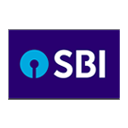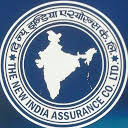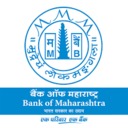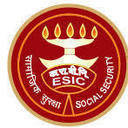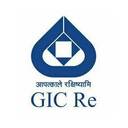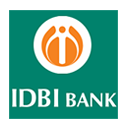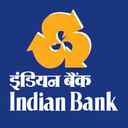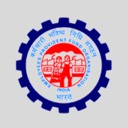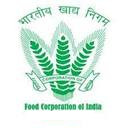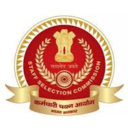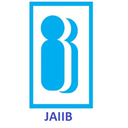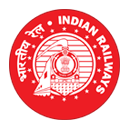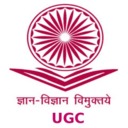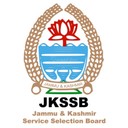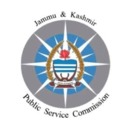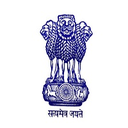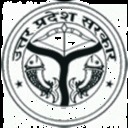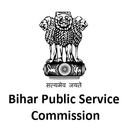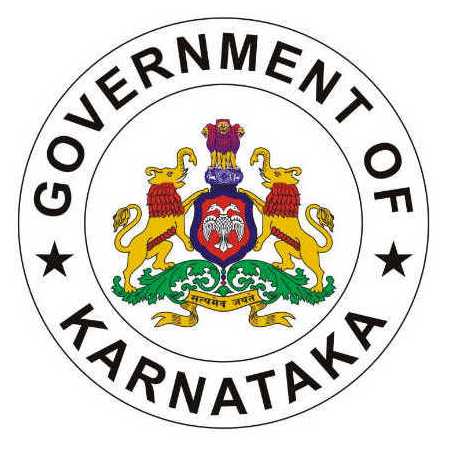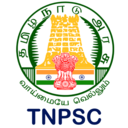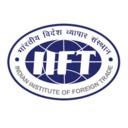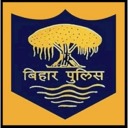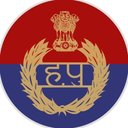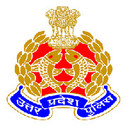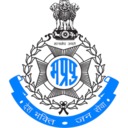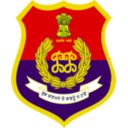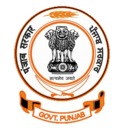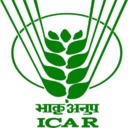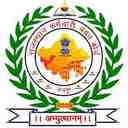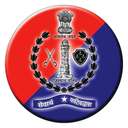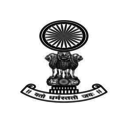NABARD Grade A 2025 Notification: NABARD Notification for 2025 is long awaited by candidates because it offers well-reputed job opportunities. Hence, it is important for the candidates to be aware of all the key details of NABARD Grade A 2025 Notification in advance so that there is no issue while applying for the job openings.
NABARD Grade A 2025 Notification
The NABARD Grade A 2025 Notification is expected to be released by July/August 2025, based on the previous notification trend. Candidates are advised to check the details below regarding eligibility, application process, fees, and other important information, and keep their documents ready before the application window opens. The NABARD Grade A Notification will also include information about the exam schedule. Hence, it is suggested to bookmark this page to avoid missing any important updates.
NABARD Grade A Notification PDF
The detailed NABARD Grade A Notification 2025 will be released on the official website of NABARD. The link to download the NABARD Notification PDF has been shared below for the previous year as the 2025 notification is not yet out. You can check out all the important information such as exam pattern, syllabus, dates, etc in the NABARD Grade A Notification PDF below.
Download NABARD Grade A Notification PDF
NABARD Grade A Exam 2025 Overview
The NABARD Grade A exam has three stages, Phase 1 (Prelims) with objective questions for screening, Phase 2 (Mains) with objective and descriptive papers on core topics, and an Interview to assess personality and domain knowledge. Check out the below table to have an overview of the NABARD Grade A Recruitment 2025.
| Particulars | NABARD Notification 2025 Details |
|---|
| Exam Conducting Body | NABARD |
| Exam Name | NABARD Grade A |
| Recruitment Year | NABARD Recruitment 2025 |
| Post Name | Assistant Manager |
| NABARD Vacancy 2025 | To Be Updated |
| Age Limit | 21–30 years as on July 1, 2024 (born 02-07-1994 to 01-07-2003) |
| Application Mode | Online |
| Selection Process | Prelims
Mains
Interview |
| Salary | Rs 1,00,000/- per month |
| Official Website | NABARD |
NABARD Grade A Exam Date 2025
You will find all the important dates such as NABARD Grade A Exam Date, admit card date, result date, etc. in the official notification or notices released by the NABARD.
| Events | NABARD Dates 2025 |
| NABARD Grade A Notification Release Date | To Be Updated |
| NABARD Grade A Application Start Date | To Be Updated |
| NABARD Grade A Application Last Date | To Be Updated |
| Phase 1 Admit Card Release Date | To Be Updated |
| NABARD Grade A Phase 1 Exam Date | To Be Updated |
| NABARD Result Date for Prelims | To Be Updated |
| NABARD Phase 2 Admit Card Release Date | To Be Updated |
| NABARD Grade A Phase 2 Exam Date | To Be Updated |
| NABARD Result Date for Phase 2 | To Be Updated |
| Psychometric Test Date | To Be Updated |
| NABARD Final Result Date | To Be Updated |
Attempt NABARD Grade A Previous Year Papers
NABARD Grade A Application Process
The NABARD Grade A Apply Online Process will begin once the official notification is released. Candidates must complete the application within the specified window mentioned in the notification. Avoid waiting till the last date to prevent technical issues. Here's a step-by-step guide to the process:
1. Online Registration:
Visit the official NABARD website: www.nabard.org
Click on the ‘Apply Online' link for Grade A recruitment.
Register using a valid email ID and mobile number.
2. Fill the Application Form:
Enter personal, educational, and other required details.
Select the discipline or category (RDBS/Rajbhasha) carefully.
3. Upload Documents:
Upload scanned copies of your photograph, signature, thumb impression, and handwritten declaration as per specifications.
4. Pay Application Fee:
Payment must be made online using debit/credit card, UPI, or net banking.
Application fees vary by category and will be mentioned in the official notification.
5. Final Submission:
Review the form carefully before final submission.
Take a printout of the confirmation page for future reference.
NABARD Grade A Application Fee 2025
The below mentioned NABARD Grade A Application Fee is exclusive of GST. The application - varies by category, typically around ₹590 for general and ₹1180 for both Level 1 and Level 2 applications. Check out the fee details for all the categories below:
| Categories | SC/ ST/ PWBD | All others |
|---|
| Application Fee | Nil | Rs. 700 |
| Intimation Charges | Rs. 150 | Rs. 150 |
| Total | Rs. 150 | Rs. 850 |
NABARD Grade A Eligibility Criteria 2025
All candidates applying for the post must fulfill the eligibility conditions mentioned in the official NABARD Grade A Notification 2025. For complete details, refer to the eligibility subsections provided below. Additionally, to strengthen your exam preparation, attempting mock tests is highly recommended as they play a crucial role in improving accuracy and speed. So, do not forget to attempt NABARD Grade A Mock Test.
NABARD Grade A Educational Qualification
Last year, there were 17 disciplines for which vacancies were out. The post wise educational criteria for NABARD Grade A are given below.
| Discipline | NABARD Grade A Educational Qualification |
|---|
| General | Bachelor's Degree in any subject OR
Post Graduate degree, MBA/PGDM OR
CA/ CS/ICWA OR Ph.D from Institutions recognized by GOI/UGC. |
| C.A. | Bachelor's degree in any discipline from a recognized University/ Institution with Membership of Institute of Chartered Accountants of India (ICAI). The Membership of ICAI must have been obtained on or before the reference date |
| I.T. | Bachelor's Degree in Computer Science/ Computer Technology/ Computer Applications/ Information Technology OR Post Graduate degree in Computer Science/ Computer Technology/ Computer Applications/ Information Technology |
| Finance | BBA (Finance/Banking) / BMS (Finance/Banking)
OR
2 years full time P.G. Diploma in Mgt (Finance) / Full-time MBA (Finance) /MMS (Finance) with a Bachelor's Degree in any discipline. Candidates will be required to submit a certificate from a University/ Institution regarding specialization in finance
OR
Bachelor of Financial and Investment Analysis |
| Agriculture | Bachelor's Degree in Agriculture OR
2 years full time Post Graduate Degree in Agriculture (Soil Science/ Agronomy) |
| Animal Husbandry | Bachelor's Degree in Veterinary Sciences / Animal Husbandry OR Post Graduate degree in Veterinary Sciences / Animal Husbandry |
| Fisheries | Bachelor's Degree in Fisheries Science OR
Post graduate degree in Fisheries Science |
| Plantation & Horticulture | Bachelor's Degree in Horticulture OR
Post Graduate degree in Horticulture |
| Geo Informatics | BE/ B.Tech/ BSC degree in Geoinformatics OR
ME/ M.Tech/ MSc degree in Geoinformatics |
| Forestry | Bachelor's degree in Forestry OR
Post graduate degree in Forestry |
| Food Processing | Bachelor's degree in Food Processing/ Food Technology OR
Post graduate degree in Food Processing / Food Technology |
| Statistics | Bachelor's Degree in Statistics OR
Post Graduate degree in Statistics |
| Development Management | Bachelor's degree in Social Work/ Rural Development/ Rural Management/ Development Studies/ Development Mgt/ Development Administration/ Economic/ Development Economics OR
Post Graduate degree in Social Work/ Rural Development/ Rural Management / Development Studies/ Development Mgt/ Development Administration/Economic/ Development Economics |
| Civil Engineering | Bachelor's Degree in Civil Engineering OR
Post Graduate Degree in Civil Engineering |
| Electrical Engineering | Bachelor's Degree in Electrical Engineering/ Electrical & Electronics Engineering OR
Post Graduate Degree in Electrical Engineering/ Electrical & Electronics Engineering |
| Environmental Engineering / Sciences | Bachelor's Degree in Environmental Engineering/ Environmental Science OR
Post Graduate Degree in Environmental Engineering / Environmental Science |
| Human Resource Management | Bachelor's Degree AND 2 years full time Post Graduate Degree/ Diploma in Personnel Management/ Industrial Relations/ Human Resource/ HR Development/ Labour Law) |
Important Notes:
- Graduation must be from any recognized University/Institution with a minimum of 60% marks (SC/ ST/ PWBD applicants - 55%) in aggregate for both RDBS & Rajbhasha.
- Post Graduation must be from any recognized University/Institution with a minimum of 55% marks (SC/ ST/ PWBD applicants - 50%) in aggregate.
NABARD Grade A Educational Qualification for Rajbhasha
For the Rajbhasha Officer position, candidates must fulfill specific language-related criteria under the NABARD Grade A eligibility. The requirements include three options, and the candidate must possess any one of these options along with the additional requirement:
| Qualification Criteria | Details |
|---|
| Option 1: Bachelor's Degree + PG Diploma in Translation | Bachelor's Degree in Hindi or English medium from a recognized university with Hindi and English as compulsory/elective subjects, AND Post Graduate Diploma in Translation (minimum 1 year) from Hindi to English and vice versa from a recognized institution |
| Option 2: Master's Degree in Hindi | Master's Degree in Hindi with at least 60% marks (55% for SC/PwBD), with English studied as main/elective subject for at least 2 years during Bachelor's degree |
| Option 3: Master's Degree in English | Master's Degree in English with at least 60% marks (55% for SC/PwBD), with Hindi studied as main/elective subject for at least 2 years during Bachelor's degree |
| Additional Requirement | Ability to translate documents from English to Hindi and vice versa (key role requirement) |
NABARD Grade A Age Limit
Candidates applying for NABARD Grade A Recruitment 2025 for RDBS & Rajbhasha posts must be between 21 and 30 years of age as of the expected cut-off date, 1st July 2025. This means applicants should be born between 2nd July 1995 and 1st July 2004 (both dates inclusive). Age relaxation is applicable as per government rules.
| Category | Age Limit | Date of Birth Range (Expected) | Remarks |
|---|
| General | 21 to 30 years | 2nd July 1995 to 1st July 2004 | No relaxation |
| OBC | 21 to 33 years (3 years relaxation) | 2nd July 1992 to 1st July 2004 | As per government norms |
| SC/ST | 21 to 35 years (5 years relaxation) | 2nd July 1990 to 1st July 2004 | As per government norms |
| PWD (General) | 21 to 40 years (10 years relaxation) | 2nd July 1985 to 1st July 2004 | Benchmark disability required |
| PWD (OBC) | 21 to 43 years | 2nd July 1982 to 1st July 2004 | 13 years total relaxation |
| PWD (SC/ST) | 21 to 45 years | 2nd July 1980 to 1st July 2004 | 15 years total relaxation |
NABARD Grade A Exam Pattern
Knowing the exam pattern is essential so that the candidates know the right direction/ strategy to prepare for the exam. Check out the NABARD Grade A Exam Pattern for both phases below.
NABARD Grade A Prelims Exam Pattern
Candidates who decided to appear for the NABARD Grade A Recruitment 2025 should note that a total composite time of 120 minutes is allotted to complete all the tests combined. The exam is conducted bilingually, except for the English language section, which is only in English. It is important to understand that some sections are qualifying in nature, while others contribute to the merit score. Only the marks obtained in the merit-based sections will be considered for the final selection.
i) Qualifying Section - Reasoning, English Language, Computer Knowledge, Quantitative Aptitude & Decision Making
ii) Merit Section - General Awareness, Economic & Social Issues (with focus on Rural India), Agriculture & Rural Development with Emphasis on Rural India.
| Name of the Test | No. of Questions | Maximum Marks |
|---|
| Reasoning | 20 | 20 |
| English | 30 | 30 |
| Computer | 20 | 20 |
| Quantitative Aptitude | 20 | 20 |
| Decision Making | 10 | 10 |
| General Awareness | 20 | 20 |
| ESI | 40 | 40 |
| ARD | 40 | 40 |
| Total | 200 | 200 |
NABARD Grade A Mains Exam Pattern
As part of the NABARD Grade A Recruitment 2025 process, only those candidates who successfully clear the Phase 1 (Prelims) exam will be shortlisted for the Phase 2 (Mains) stage. The Mains exam plays a crucial role in the final selection and evaluates candidates on descriptive writing and subject-specific knowledge. Check out the detailed Mains exam pattern below to understand the structure and marking scheme.
| Paper | Type | No. of Questions | Time (minutes) | Total Marks |
|---|
| Paper-1 | General English (Online Descriptive) | 3 | 90 | 100 |
| Paper-2 | Economic & Social Issues & Agriculture & Rural Development | 50% Objective - 30 Questions 50% Descriptive - 6 Questions (Attempt 4) | 30 (Objective) 90 (Descriptive) | 100 |
| Total | 200 |
NABARD Grade A Mains Exam Pattern for Generalist Officers
For the post of Generalist Officer, below is the exam pattern. Also note a few points from the section below:
- The maximum marks for paper 1 (English) is 100 marks. Marks for paper 2 (ESI &ARD Objective & Descriptive) is 50 marks each.
- In paper 1, only 3 questions will be asked.
- In paper 2, 30 questions will be asked for objective part and 6 questions will be asked for descriptive part.
| Paper | Subject | Time |
|---|
| Paper I | General English
(Descriptive) | 90 Min |
| Paper II | ESI & ARD
(Objective) | 30 Min |
| Paper II | ESI & ARD (Descriptive) | 90 Min |
NABARD Grade A Mains Exam Pattern for Specialist Officers & Rajbhasha
For the post of Specialist Officer, below is the exam pattern. In Paper 2 Objective paper, some questions may carry 2 marks each and some questions may carry 1 mark each. Also, the number of questions for General English are 3, and for stream specific, it is 30 for objective part and 6 for descriptive part.
| Paper | Subject | Marks | Time |
|---|
| Paper I | General English
(Descriptive) | 100 | 90 Min |
| Paper II | Stream Specific
(Objective) | 50 | 30 Min |
| Paper II | Stream Specific (Descriptive) | 50 | 90 Min |
NABARD Grade A Psychometric Test
The NABARD Grade A Psychometric Test is designed to evaluate a candidate's personality, decision-making ability, emotional intelligence, and behavioural traits. It helps NABARD assess how well-suited a candidate is for the organizational environment and managerial responsibilities. This test will be conducted in a multiple-choice format with a duration of 90 minutes. While it is not eliminatory, performance in this test is considered during the final selection process.
NABARD Grade A Syllabus 2025
The prelims exam consists of 8 sections. These sections are Reasoning, English Language, Computer Knowledge, Quantitative Aptitude, Decision Making, General Awareness, Economic & Social Issues (with focus on Rural India), Agriculture & Rural Development with Emphasis on Rural India. The mains exam consists of 3 sections. These sections are ESI, ARD and English (Descriptive).
NABARD Grade A Prelims Syllabus
Check out the NABARD Grade A Syllabus for the qualifying sections of Prelims.
| NABARD Grade A Syllabus for Phase 1 |
|---|
Reasoning Ability
Puzzles & Seating Arrangement, Syllogism, Data Sufficiency, Statement Based Questions (Verbal Reasoning), Inequality, Miscellaneous Questions, Input - Output, Blood Relations, Coding - Decoding |
Quantitative Aptitude
Data Interpretations, Quadratic Equations, Number Series, Simplification/Approximation, Data Sufficiency, Arithmetic Questions, Quantity Comparisons, Mathematical Inequalities |
English Language
Reading Comprehension, Cloze Test, Sentence Improvement, Spotting the Errors, Fill in the Blanks, Sentence Rearrangement, Para Jumbles, New Pattern Questions |
General Awareness
Questions based on Current Affairs, Banking, Economy, and Insurance, Current Affairs based on recent appointments, sports, awards, and honors, new schemes, international and national news, the latest science and technological developments |
Decision Making
Interpreting Information, Recognizing Assumptions, Situation-based Questions, Case Studies |
Computer Knowledge
Input - Output devices, Networking, DBMS, MS Office, Internet, History of Computers & Generations, Shortcuts |
NABARD Grade A ARD Syllabus for Phase 1 & 2
The candidates must prepare for both Phase 1 & 2 simultaneously for NABARD Grade A ARD as the topics are same but the difficulty level changes.
| NABARD Grade A ARD Syllabus |
|---|
Agriculture
Definition, Meaning, and Its Branches, Agronomy: Definition, Meaning, and Scope of Agronomy, Classification of Field Crops, Factors Affecting Crop Production, Argo Climatic Zones, Types of Cropping Systems and Their Definitions, Problems faced if the land is dry - Seed Production & Processing, and Seed Village, Meteorology: Weather Parameters, Crop-Weather Advisory, Precision Farming, System of Crop Intensification, Organic Farming |
Soil and Water Conservation
Major Soil Types, Soil Fertility, Fertilizers, Soil Erosion, Soil Conservation, Watershed Management |
Water Resource
Irrigation Management, Types of Irrigation, Sources of Irrigation, Crop-Water Requirement, Command Area Development, Water Conservation Techniques, Micro Irrigation, Irrigation Pumps, Major, Medium and Minor Irrigation |
Agri & Farm Engineering
Power and Machinery Related to Farms, Power Sources on the farm - animal, human, electrical, mechanical, wind, biomass and solar, biofuels, Water Harvesting Structures, Farm Ponds Agro Processing, Modified & controlled storage, storage of perishable foods, bins, godowns, and grain silos |
Horticulture & Plantation
Meaning, Definition, and Its Branches, Production Technology and Agronomic practices with respect to various horticulture and plantation crops, Value and supply chain management of Horticulture & Plantation crops, Post-harvest management of the same |
Animal Husbandry
Farm animals and their role in the Indian economy, Animal husbandry methods in India, Commonly used terminologies pertaining to the different species of livestock, Utility classification of breeds of cattle, Introduction to common fodders and feeds, their utility, and classification, Introduction to the industry of poultry in India, Common terms pertaining to poultry production and management, Socio-Economic implications of mixed farming on the farmer in India and the concept of mixed farming, Livestock and Poultry production and their obligatory and complementary relationship with that of agricultural farming |
Fisheries
Fisheries Resources, Exploitation and management – marine water, freshwater, and brackish water, Aquaculture- Inland and Marine, Biotechnology, Post-Harvest Technology, Importance of fisheries in India, Common terms pertaining to fish production |
Forestry
Basic Concepts of Forest and Forestry, Management, mensuration, and Economics regarding Forests, and the Principles of silviculture, Concepts of agroforestry, social forestry, and joint forest management, Legislation and Policies regarding forests in India, 2015 Report on the State of forests in India, Ministry of Forest, Environment, and Climate Change, Ministry of Forest, Environment, and Climate Change and Recent developments under them |
Agriculture Extensions
Its role and importance, evaluations methods of extension programmes, KVK's (Krishi Vigyan Kendra) role in the dissemination of technologies based on Agriculture |
Ecology & Climate Change
Ecology and how it is relevant to man, sustainable management, and conservation of natural resources, Climate change and its causes, GHGs (Green House Gases), countries emitting high amounts of GHGs, and climate analysis, Distinguish between adaptation and mitigation, Climate change and its impact on rural livelihoods and agriculture, Carbon credit IPCC, UNFCCC, CoP meetings, Funding mechanisms for climate change projects, Indian government initiatives like SAPCC, NAPCC, and INDC |
Present Scenario of agriculture and allied activities in India
Trends of recent times, Major challenges in agriculture measures to enhance, Viability of agriculture, Factors of Production in Agriculture, Agricultural Finance and Marketing, Globalization and its impacts on Indian Agriculture and the issue of food security, Concept and Types of Farm Management |
Rural Development
Concept of Rural Area, Structure of the Indian Rural EconomyImportance, and role of the rural sector in India- Economic, Social and Demographic Characteristics of the Indian rural economy, causes of Rural Backwardness. Rural population in India; Occupational structure, Farmers, Agricultural Labourers, Artisans, Handicrafts, Traders, Forest dwellers/tribes and others in rural India- Trends of change in rural population and rural work force; problems and conditions of rural labour; Issues and challenges in Handlooms Panchayati Raj Institutions – Functions and Working. MGNREGA, NRLM – Aajeevika, Rural Drinking water Programmes, Swachh Bharat, Rural Housing, PURA and other rural development programmes. |
NABARD Grade A ESI Syllabus for Phase 1 & 2
For NABARD Grade A ESI as well, the topics are the same but the difficulty level changes. In Mains, you will find more difficult questions.
| NABARD Grade A ESI Syllabus |
|---|
Indian Economy and Its Nature
Institutional & Structural Features, Economic Underdevelopment, Opening Up the Indian Economy, Globalization, Economic Reforms in India, Privatization |
Inflation
Various trends regarding inflation and the impacts they have on Individual Income and National Economy |
Employment Generation & Poverty Alleviation in India
Urban & Rural, Measurement of Poverty, Poverty Alleviation Programmes of the Government |
Population Trends
Population Growth and Economic Development, Population Policy in India |
Agriculture
Characteristics / Status, Technical and Institutional changes in Indian Agriculture, Agricultural performance, Issues in Food Security in India, Non-Institutional and Institutional Agencies in rural credit |
Industry
Industrial and Labour Policy, Industrial Performance, Regional Imbalance in India's Industrial Development, Public Sector Enterprises |
Financial Institutions and Rural Banking in India
Reforms in the Financial Sector / Banking |
Economic Globalization
International Funding Institutions and their roles, IMF & World Bank, WTO, Regional Economic Co-operation |
Social Structure in India
Multiculturalism, Demographic Trends, Urbanization and Migration, Gender Issues Joint Family System, Social Infrastructure, Education, Health and Environment |
Education
Status & System of Education, Socio-Economic Problems Associated with Illiteracy, Educational Relevance and Educational Wastage, Educational Policy for India |
Social Justice
Problems of scheduled tribes and scheduled castes, Socio-economic programmes directed towards Scheduled castes, Scheduled tribes, and Other Backward Classes |
Positive Discrimination or steps to favor the underprivileged classes
Social Movements, Indian Political Systems, Human Development, Current Economic & Social Issues |
Explore NABARD Grade A Courses



